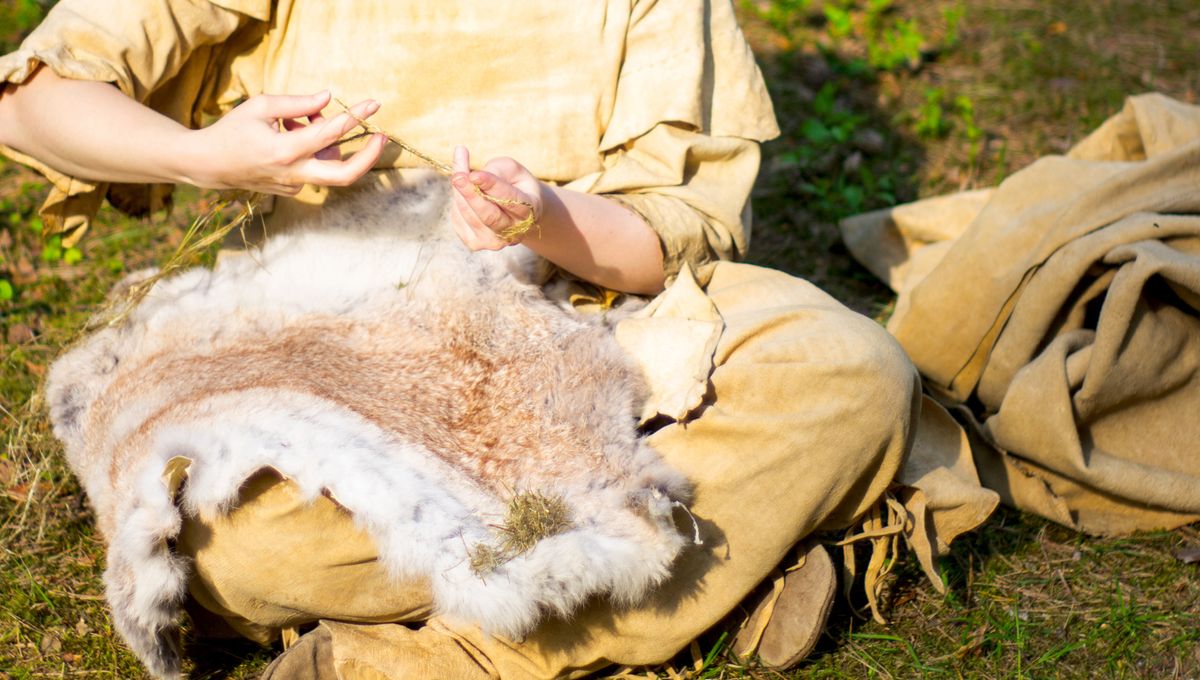
Clothing is important to (most) humans. It protects us from the elements, provides us with a way to express ourselves, and stops us from getting arrested for public indecency – but when did we start wearing it?
The oldest piece of clothing
It’s difficult to know exactly when Homo sapiens shed their birthday suits for less idiomatic attire, although that’s not for lack of trying; it’s just that the archaeological evidence doesn’t provide a solid answer. It also depends on what kind of evidence you take into consideration.
The oldest direct evidence we have is the Tarkhan Dress, a linen v-neck shirt that was discovered in a First Dynasty tomb at the ancient Egyptian cemetery Tarkhan by Egyptologist Flinders Petrie. It was only in recent years, however, that radiocarbon dating revealed the garment was created sometime between 3482 to 3102 BCE.
You might be thinking, “Surely people were wearing clothes before that?” As of yet, archaeologists haven’t found any clothing older than the Tarkhan dress. That’s not necessarily surprising – unlike today, when many clothes are made from nonbiodegradable synthetic fibers, older clothing was made from biodegradable animal or plant-based fibers, like wool or linen. The Tarkhan dress likely only survived because it was in an extremely dry environment, hindering its degradation.
Ancient cities and caves
However, whilst the shirt is the earliest (nearly) entire garment that we’ve found, it’s not the earliest evidence of woven textiles – this is where research into when humans said “nope” to regular nudity starts to stray into the less direct evidence. Archaeologists, for example, uncovered fragments of woven plant-based textiles in remains of the ancient settlement Çatalhöyük, Turkey, that are thought to be around 8,500 years old, which could suggest that people were producing and wearing clothing at that time.
And if we’re sticking to fibers, there’s far older evidence than the pieces of cloth found in Turkey. Around 1,440 kilometers (895 miles) away in Dzudzuana Cave, Georgia, researchers found wild flax fibers. Some of the fibers had been twisted and dyed with natural pigments, which the team suggested as evidence for the sewing of garments. Here’s the real kicker though – these fibers are around 30,000 years old, a pretty significant jump back in time for the origin of clothing.
The answer lice within
Researchers have also taken to somewhat more unusual means to push the timeframe back even further – lice. There are two types of lice that feed on humans; the head louse chomps on our scalp, whereas the body louse feeds on the body. The body louse also lives in our clothing, so scientists theorized that if they could figure out when the body louse originated, it could provide indirect evidence for when humans started wearing clothes too.
In a number of studies, researchers have compared the DNA of head and body lice to determine when the body louse arose. One of the more recent estimates suggests that the body louse could have diverged from the head louse anywhere between 83,000 to 170,000 years ago, putting the origin of clothing in that time. However, this is only a rough estimate; it would’ve taken time for body lice to adapt, and so clothing could have originated slightly before this timeframe.
That’s just the evidence for modern-day humans wearing clothing; there are signs that Neanderthals may well have popped a fur coat on too. Nonetheless, the further we go back in history, the harder it is to find direct evidence – perhaps we’ll never know the naked truth about the dawn of clothing.
[H/T: PBS Eons]
Source Link: When Did Humans Stop Being Naked?